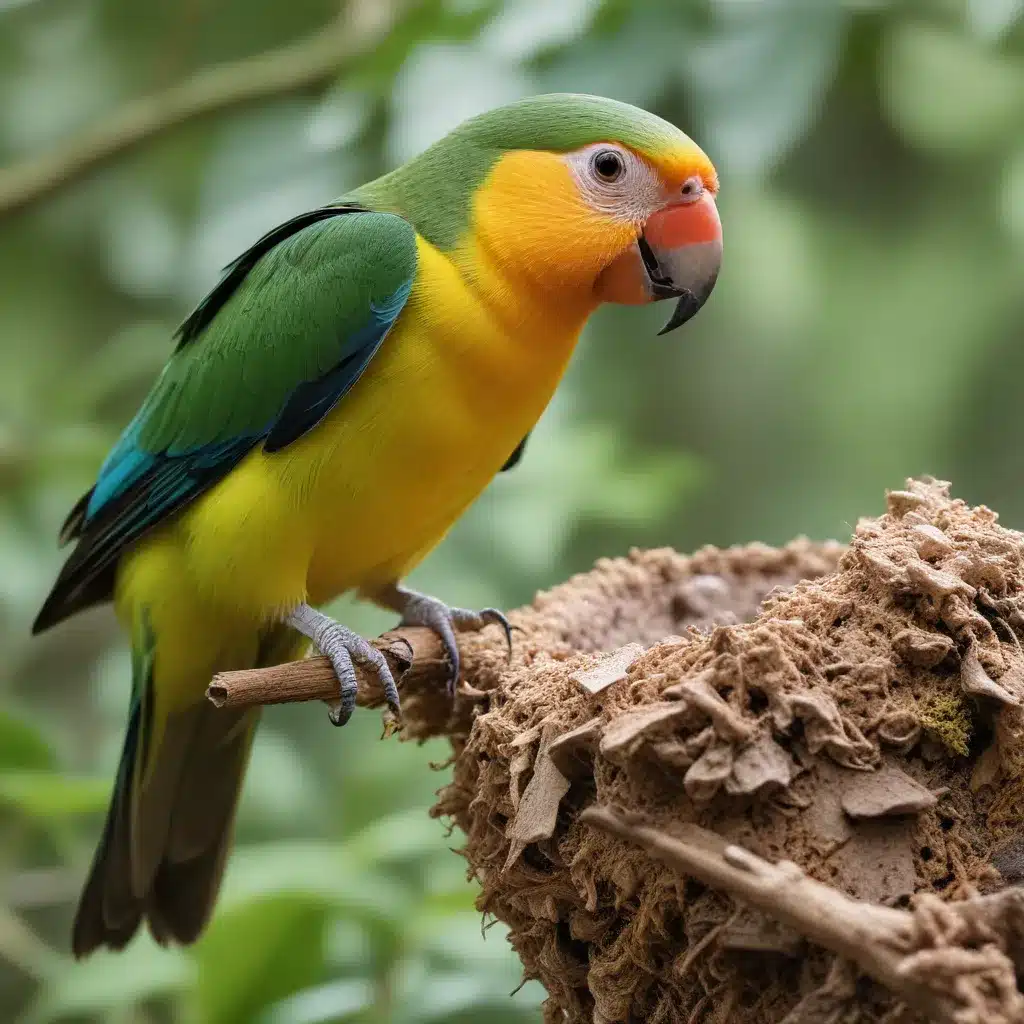
As an experienced avian caretaker, I’ve seen firsthand how incorporating environmental enrichment into a bird’s training regimen can dramatically improve their overall wellbeing and strengthen the bond between human and feathered friend. Birds are highly intelligent creatures, and providing them with the right combination of mental and physical stimulation is crucial for ensuring they thrive in captivity.
The Importance of Enrichment
More than 20 million pet birds live in the United States, and they are adored for their beautiful appearances, extraordinary personalities, and unique behaviors. However, birds in captivity often face the challenges of boredom and stress associated with the inability to perform their natural behaviors. Without adequate enrichment, a bird’s boredom may progress to destructive behaviors, such as feather-picking, excessive vocalization, and even self-mutilation.
As avian caretakers, our goal should be to replicate our feathered friends’ natural environments as closely as possible, providing them with the opportunity to engage in the behaviors they would exhibit in the wild. This not only helps to prevent the development of behavioral issues but also promotes overall physical and mental well-being.
Types of Enrichment
When it comes to environmental enrichment for birds, the options are vast and varied. Some of the most common themes include:
Foraging Opportunities
Providing opportunities for birds to exhibit their natural foraging behaviors is a crucial aspect of enrichment. This can be achieved through the use of puzzle feeders, food-filled toys, or by scattering treats throughout their enclosure, encouraging them to search and work for their meals.
Novel Stimuli
Introducing new objects, textures, and sensory experiences into a bird’s environment can pique their curiosity and encourage exploration. This could include items like paper bags, cardboard boxes, or even novel perches of varying shapes and materials.
Destructive Outlets
Many birds, especially parrots, have a natural inclination to chew and manipulate objects. Providing them with appropriate items to destroy, such as phone books, cardboard, or untreated wood, can satisfy this instinctual need.
Social Interaction
Birds are highly social creatures, and providing opportunities for interaction, either with their human caretakers or with other birds, can be incredibly enriching. This could involve target training, positive reinforcement-based training sessions, or even supervised playtime.
Exercise and Movement
Allowing birds to exercise and move freely within their enclosure is essential for their physical and mental well-being. This can be achieved through the use of large, varied aviaries, as well as by encouraging flight and climbing behaviors.
Sensory Stimulation
Appealing to a bird’s senses, such as sight, sound, and touch, can also contribute to their enrichment. This could include providing them with access to natural sunlight, playing recorded bird vocalizations, or incorporating different textures and materials into their environment.
Integrating Enrichment and Training
One of the most effective ways to incorporate environmental enrichment into a bird’s life is by integrating it into their training regimen. Target training, a technique that uses positive reinforcement to shape desired behaviors, is a fantastic way to challenge these highly intelligent animals while also strengthening the bond between bird and caretaker.
Enhancing Training Sessions
By incorporating elements of enrichment into training sessions, you can make the experience more engaging and rewarding for your feathered friend. For example, you could use food-filled puzzle toys as rewards or introduce novel objects and textures during the training process to keep your bird’s interest piqued.
Enrichment for Different Species
The specific enrichment needs of your bird will depend on their species, personality, and individual preferences. For instance, a high-energy parrot may thrive with a variety of foraging opportunities and destructible items, while a more sedentary bird, such as an owl, may benefit more from sensory stimulation and social interaction.
Monitoring Behavior
As you implement enrichment and training strategies, it’s essential to closely monitor your bird’s behavior and adjust your approach as needed. Observing signs of stress, boredom, or contentment can help you fine-tune your enrichment program to ensure your feathered companion is thriving.
The Benefits of the Enrichment-Training Approach
By incorporating environmental enrichment into your bird’s training, you can unlock a wealth of benefits for both your feathered friend and yourself.
Improved Welfare
Providing your bird with the opportunity to engage in natural behaviors and exercise their cognitive abilities can lead to a significant improvement in their overall welfare. This can manifest in reduced stress, improved physical health, and a decrease in problematic behaviors.
Stronger Human-Bird Bond
When you actively engage your bird in training and enrichment activities, you’re fostering a deeper level of trust and cooperation. This can result in a stronger, more positive relationship between you and your feathered companion.
Cognitive Stimulation
Birds, particularly parrots and birds of prey, are remarkably intelligent creatures. By challenging them with problem-solving tasks and novel experiences, you’re promoting cognitive development and preventing boredom, which can lead to behavioral issues.
Incorporating environmental enrichment into your bird’s training regimen is a surefire way to enhance their quality of life and strengthen the bond you share. By catering to their natural instincts and providing them with the right combination of mental and physical stimulation, you’re not only ensuring their well-being but also fostering a deeper appreciation for these remarkable creatures.
Remember, the key to success is to be creative, observant, and adaptable in your approach. Every bird is unique, and what works for one may not work for another. So, don’t be afraid to experiment, seek advice from experienced avian professionals, and most importantly, have fun along the way! After all, the more engaged and enriched your bird is, the more rewarding the experience will be for both of you.
If you’re looking for more resources on avian care and training, be sure to visit the Mika Birds Farm blog at https://mikabirdsfarm.com/. There, you’ll find a wealth of information and expert guidance to help you provide the best possible life for your feathered friends.


